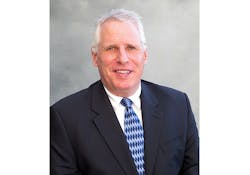Whatever you think of Tesla CEO Elon Musk, you can’t say the man is afraid to think big. No one else in the world is simultaneously trying to revolutionize the auto industry, space travel, tunnel technology, the solar business and utility-scale energy storage. I am not sure if Musk will flame out or if history will one day see him as this generation’s Steve Jobs, Thomas Edison or Henry Ford. But if you have an interest in new technology, he is a guy you must watch.
Musk’s audacious confidence in Tesla changing the world was in full display at the company’s Battery Day on Sept. 22. As with many of Musk’s presentations, Battery Day got mixed reviews. The price of Tesla’s stock dropped -10% in the 24 hours after the event, most likely because many investors and stock analysts were expecting a big announcement like the “million-mile EV battery” Musk has been hinting at in his social media posts.
I watched a video stream of Musk’s Battery Day presentation. While he admitted in it that his plan to sell an entry-level EV for $25,000 is still at least three years off, he did offer insight into some revolutionary advances Tesla is making in battery construction and manufacturing processes that he believes will help him hit this price point.
Elon Musk doesn’t have a monopoly on big ideas. Think for a moment about what it would mean for the United States if all citizens and businesses could depend on world-class, high-speed internet. The expansion of high-speed internet into under-served urban neighborhoods and rural areas would have game-changing benefits on the education offered to students and on the development of new business opportunities throughout the United States.
Here in the Kansas City metropolitan area, the digital divide is very real. Some communities have insanely fast internet access through Google Fiber, which offers speeds of one gigabit per second for both download and upload, — roughly 100 times faster access than what most Americans have. Yet, just a few miles away, in some urban or rural areas, schoolchildren must go to the local McDonald’s or school grounds to tap into WiFi, either because their families cannot afford high-speed internet or it’s not available in their neighborhood.
Although there’s lots of talk about city dwellers moving out of urban areas to the country or suburban areas because of COVID-19, if a small town or suburb doesn’t offer dependable high-speed internet, it won’t have as much appeal for new residents — and won’t attract the new electrical sales opportunities that come with the construction projects population growth generates.
Also consider the impact of high-speed internet on customers’ remote job-sites and on your salespeople. Your salespeople benefit because high-speed internet could give customers on these job-sites immediate access to order status, electrical product specifications and installation or troubleshooting information.
The concept of nationwide high-speed internet isn’t far-fetched. It’s under consideration on Capitol Hill. According to a report on www.nexttv.com, in June, House Majority Whip James Clyburn (D-SC) and members of the House Rural Broadband Task Force introduced H.R. 7302: The Accessible, Affordable Internet for All Act, a bill that “would put $100 billion into building high-speed broadband infrastructure in underserved as well as unserved communities and subsidize the service to make sure it was affordable.”
Sound like too massive of an undertaking? It isn’t. The United States had an equally audacious goal with the 1936 Rural Electrification Act (REA), which provided electrical services to rural communities throughout the nation. REA electricians and crews traveled throughout the land to provide basic electrical service to farms and rural communities. According to my research, in the post-World War II years, these installations included a 60A, 230V fuse panel with a 60A range circuit; 20A kitchen circuit; and two or three 15A lighting circuits.
Now that’s thinking big. Can we do it again? I don’t see why not.
About the Author
Jim Lucy
Editor-in-Chief of Electrical Wholesaling and Electrical Marketing
Jim Lucy has been wandering through the electrical market for more than 40 years, most of the time as an editor for Electrical Wholesaling and Electrical Marketing newsletter, and as a contributing writer for EC&M magazine During that time he and the editorial team for the publications have won numerous national awards for their coverage of the electrical business. He showed an early interest in electricity, when as a youth he had an idea for a hot dog cooker. Unfortunately, the first crude prototype malfunctioned and the arc nearly blew him out of his parents' basement.
Before becoming an editor for Electrical Wholesaling and Electrical Marketing, he earned a BA degree in journalism and a MA in communications from Glassboro State College, Glassboro, NJ., which is formerly best known as the site of the 1967 summit meeting between President Lyndon Johnson and Russian Premier Aleksei Nikolayevich Kosygin, and now best known as the New Jersey state college that changed its name in 1992 to Rowan University because of a generous $100 million donation by N.J. zillionaire industrialist Henry Rowan. Jim is a Brooklyn-born Jersey Guy happily transplanted with his wife and three sons in the fertile plains of Kansas for the past 30 years.
